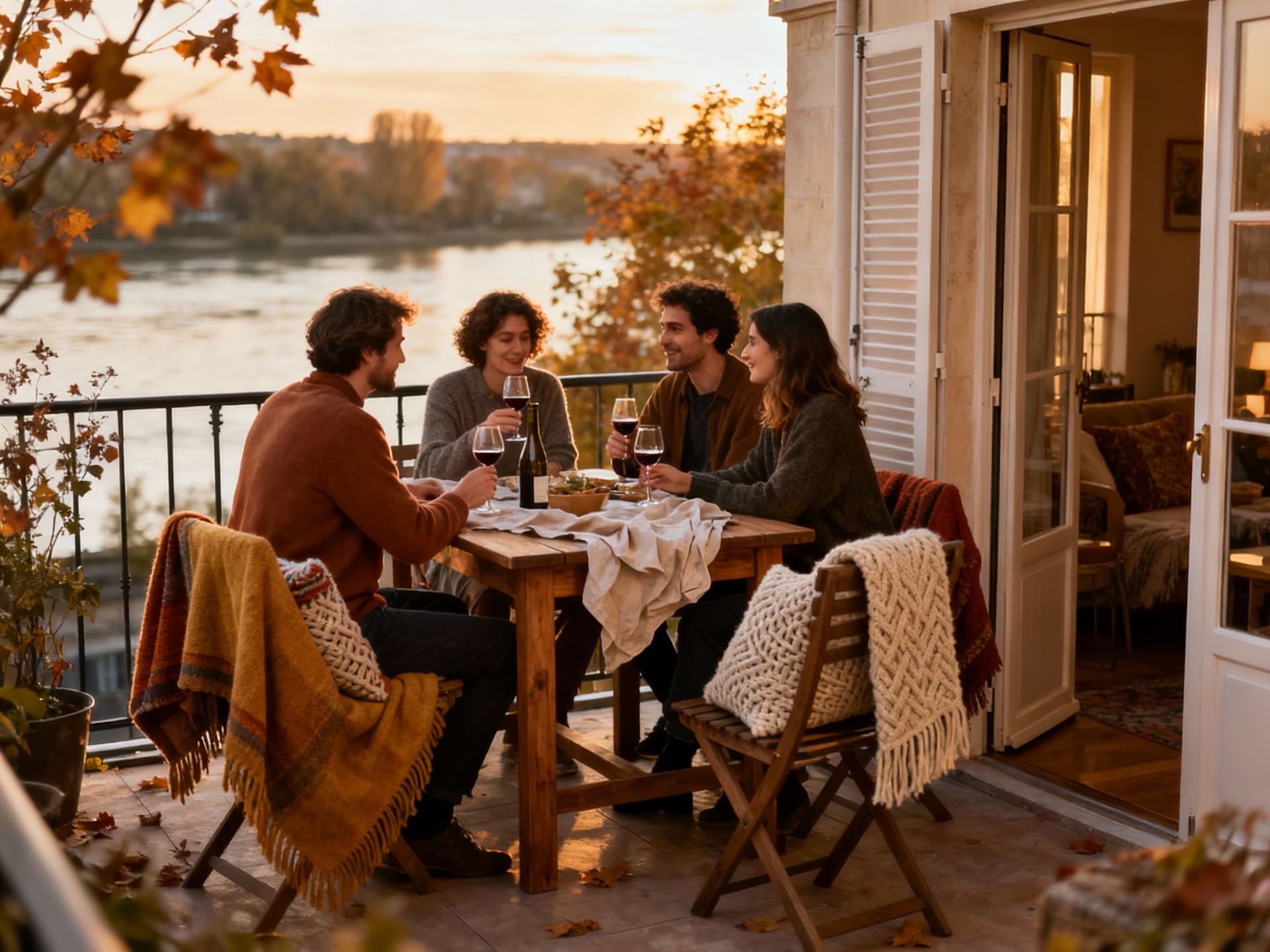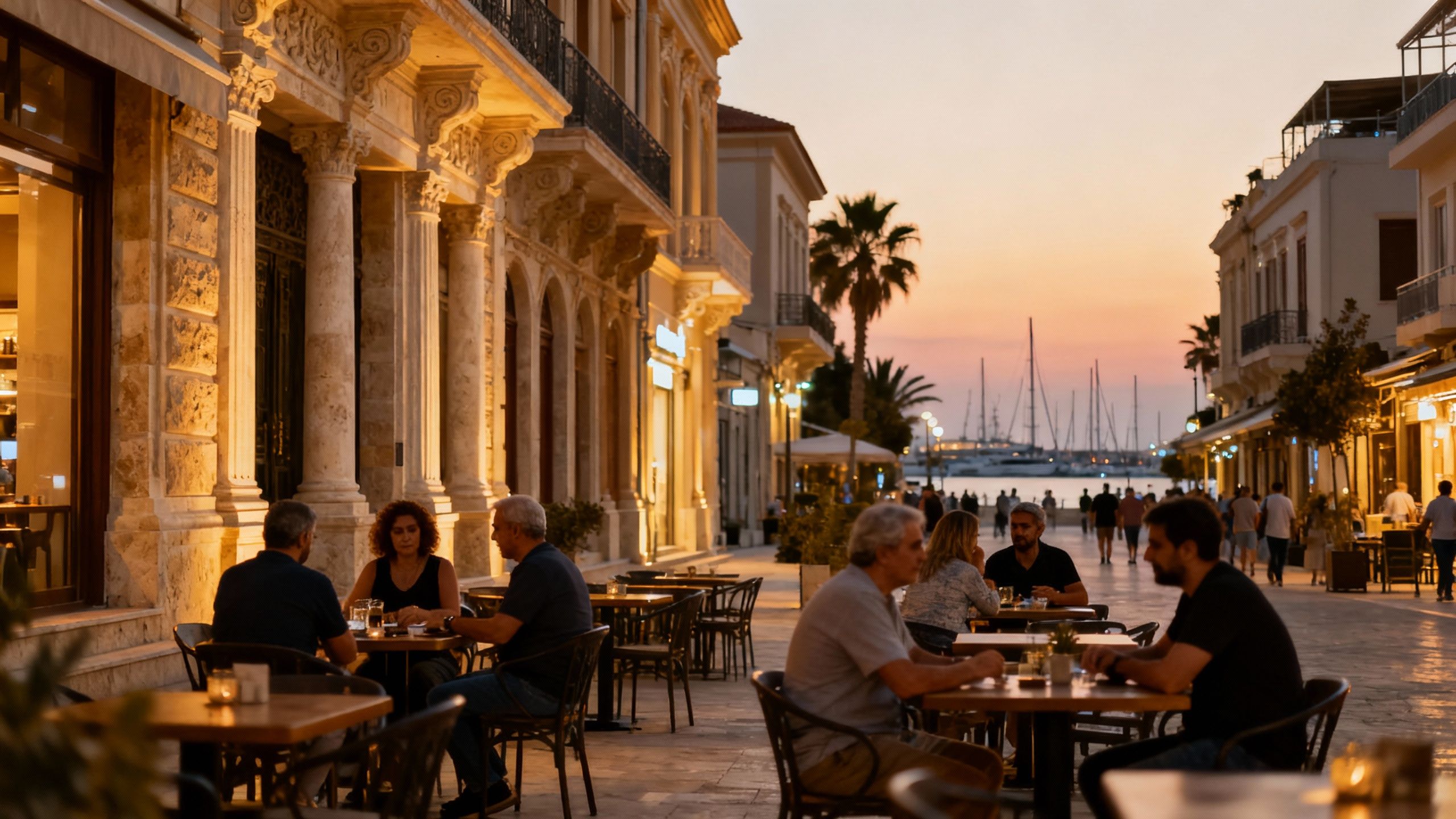Why autumn house‑hunting in France often beats summer
Autumn viewings often expose what summer conceals: service continuity, heating, true neighbourhood life and negotiating leverage for buyers seeking durable value in France.
Imagine a late-October morning in a small Provençal market: chestnuts on a brass pan, a fisherman folding his net by the quay in Marseille, and the light—softer now—pulling the patina from stone façades. Autumn in France is quieter without being sleepy; it reveals the rhythms that summer hides. For buyers who prize genuine neighbourhood life, craftsmanship and provenance over postcard-perfect bustle, this season often surfaces the clearest signals about how a place actually lives year-round.
Why autumn matters more than summer

Market activity ebbs and flows with the seasons. The frenetic, sunlit months bring tourists, short-term lets and staged presentations; by October and November, local life reasserts itself and transaction data begins to show which neighbourhoods have durable demand versus those propped up by seasonal visitors. Notaires de France and INSEE detail these rhythms in recent market summaries, where autumn volumes and price adjustments often reveal more reliable trends than the summer peak.
How the atmosphere changes — and why it matters to buyers
Walk a rue in Lyon in July and you meet terrace diners and holiday rentals; walk the same street in November and you see the municipal bakery, the school run, the habits that sustain daily life. Those habits underpin long-term property values: consistent footfall, quality food vendors, a year-round café scene and functioning services. Observing a place outside its high season clarifies whether a neighbourhood offers permanence or performance.
Seasonality exposes hidden risks
Summer demand can mask practical issues: poor heating in older buildings, restricted winter services in coastal communes, or a reliance on short-term rental income that collapses off-season. National statistics and department-level reports show divergent performance between tourist-driven coastal markets and stable inland centres—evidence that seasonality matters materially to both lifestyle and long-term returns.
Living the French life in autumn — neighbourhoods that reveal themselves

Autumn reveals texture: markets that run through November, artisans back in workshops, and squares that host weekly pétanque. These patterns help buyers choose streets where daily life aligns with their expectations. Below are close-read portraits of three contrasting places where autumn clarifies what they will be like as a home, not a holiday.
Nice — Vieux Nice and the quieter rue de la Préfecture
In summer Vieux Nice can feel theatrical; come back in October and you meet the fishmonger arranging his catch, the boulanger opening early, and residents who rely on the winter municipal services. Streets like rue de la Préfecture show whether a property will be lived in or rented to tourists. For buyers seeking Riviera light without the seasonal volatility, inspect how utility access, concierge services and noise levels differ in shoulder months.
Bordeaux — Chartrons and the riverfront calm
Chartrons’ wine bars and bookstores feel different once the cruise-ship crowds have left. The riverfront promenades reveal year-round walking routes and commuter patterns. Bordeaux’s urban fabric supports consistent demand from local professionals and viticulture-related business owners—signals that matter for medium-term capital stability rather than seasonal income alone.
Dordogne & rural Nouvelle-Aquitaine — where authenticity endures
Villages in the Dordogne or Lot-et-Garonne show their true selves in autumn: local fêtes, markets with seasonal produce, and neighbours who have lived here for generations. These are the places where provenance, stone construction and garden scale define value rather than beachfront vistas. If you value craftsmanship and community continuity, autumn visits reveal negotiation space and the state of essential services.
Making the move: practical steps for autumn house‑hunting
Treat autumn viewings as active research: arrive at different times of day, inspect heating and insulation, speak with year-round residents and check municipal timetables. The following practical checklist blends lifestyle signals with purchase-critical due diligence so you can judge a property by how it will function in November as much as in July.
Property styles and seasonal performance
Stone townhouses, maison de maître estates and contemporary apartments react differently to seasonal use. Stone houses retain heat but need roof and masonry checks; older apartments demand inspection of communal heating contracts and syndic records. Link your lifestyle—entertaining indoors, gardening, or wine-storage—to the building’s fabric before you commit.
Working with local experts who understand seasonality
Choose agents and notaires accustomed to off-season sales and long-term stewardship. Local architects, surveyors and restorers can provide realistic budgets for winter-proofing and energy upgrades; estate managers experienced in year-round occupation advise on maintenance cycles. Their counsel prevents paying a summer premium for a property that fails in winter.
- Autumn house‑hunting checklist
- Visit at breakfast and after dark to assess noise and lighting; ask neighbours about winter services.
- Inspect heating systems, insulation, roof drainage and cellar humidity—seasonal faults show up then.
- Check municipal calendars for festivals and closures; confirm local medical, school and transport services operate year-round.
- Ask for recent syndic or commune reports; request energy bills for the colder months.
Insider knowledge — what expats wish they’d known
Expat experience repeatedly shows that the romance of summer can mislead: a lively tourist street may empty to silence in winter; a beachfront rental yield can evaporate, while a village with a good school, market and train connection quietly retains value. Speaking with residents, joining a marché, and experiencing local services in the off-season reveals the durability of the life you imagine.
Cultural cues that affect where you buy
French towns have unspoken hierarchies: the morning market signals civic health; the presence of a medecin or pharmacy indicates practical viability; an active association for heritage conservation signals long-term stewardship. Read these cues before you buy—the best properties are those embedded in civic life, not just scenic views.
Long-term lifestyle and investment outlook
Recent department-level data shows rural departments appreciating as domestic buyers seek space and authenticity. For the buyer seeking legacy property, autumn offers negotiation leverage and a clearer view of deferred maintenance costs. Approach purchase as stewardship: budget for seasonal-proofing, favour durable materials, and prioritise neighbourhoods with stable civic life.
- Steps to turn autumn research into a confident purchase
- 1. Schedule multiple visits at different times and in varied weather.
- 2. Commission a seasonal survey (roof, heating, humidity) before offering.
- 3. Meet local service providers—plumber, electrician, notaire—to understand recurring costs.
- 4. Ask your agent for off-season comparable sales and year-round occupancy rates.
Autumn is not merely a quieter time to visit; it is the season that separates theatrical presentation from lived reality. For buyers who prize enduring quality—architectural integrity, community, seasonal services—this is when the true value of a French property becomes evident.
Conclusion: If you want a life in France rather than a summer portrait of one, buy after you have seen it in ordinary weather and routine moments. Observe the market’s autumn notes, use local experts who understand seasonality, and let the quieter months reveal whether a neighbourhood offers permanence. When you do, you buy not only a property but a sustainable life.
Norwegian with years in Florence guiding clients across borders. I bridge Oslo and Tuscany, focusing on legal navigation, cultural context, and enduring craftsmanship.


